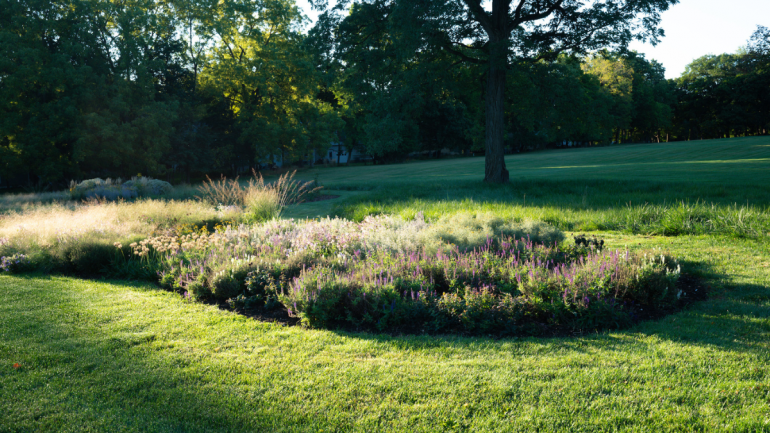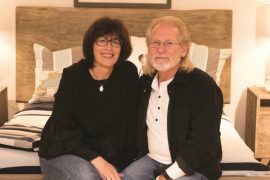By Rachel Wisinski | Photos by Holly Leitner
Since the Yerkes Future Foundation acquired ownership of historic Yerkes Observatory in 2020, Vice Chair Tom Nickols, board members and many volunteers have spent hundreds of hours working to restore the property’s original, Olmsted Brothers-designed landscape plan, and even improve it where possible. Today, Nickols says the property is ready for the public to experience the work that’s been done, via three miles of nature trails with newly placed signage. We asked him a few questions about the landscape restoration project.
ATL: Describe the property and what you had to work with. How did you approach the landscape restoration project?
Nickols: We spent the first year trying to understand what we had, while getting rid of dead trees and stumps. In 2021, we started replanting based on the 1906 plan, though we had a couple of challenges. One is climate change, so trees and other plants that once thrived in this area really couldn’t exist here anymore.
In other cases, the plan called for plantings that would be threatened by disease or invasive species.
ATL: What work has been done to the Yerkes Observatory landscape thus far?
Nickols: We have developed a landscape master plan, one that continues to evolve. Clearing invasives like buckthorn has been a major effort. We added a Welcome Garden of native perennials, surrounded by fescue and thousands of daffodils, as well as a bur oak savanna next to our mature oak/ hickory forest. A 1 1⁄2-acre pollinator meadow was added, with over 70 kinds of plants. All of these projects can be replicated by gardeners at home. Finally we continue to think about how the Olmsteds would have evolved their planning.
ATL: What are some other projects that have come out of this?
Nickols: It’s not just about the trees. We had local Boy Scouts build 12 bluebird houses, 10 of which were occupied last year. As part of the 3-plus-mile trail system, we installed an ADA-compliant portion through the forests and meadow in May. There’s also a five-hive apiary north of the pollinator meadow. Rain gardens were added to control phosphorous runoff into the lake. This spring, we put up wren houses around the campus.
ATL: Is there still work to be done?
Nickols: Absolutely! We were just accredited as a Level One arboretum by Arbnet, the global consortium of Arboreta. The process took months to complete and we are really excited. This year we will plant over 100 trees, continuing our effort to reflect the original Olmsted plan. Starting in June, we will add tours of the gardens and grounds to our already very popular indoor tours.





